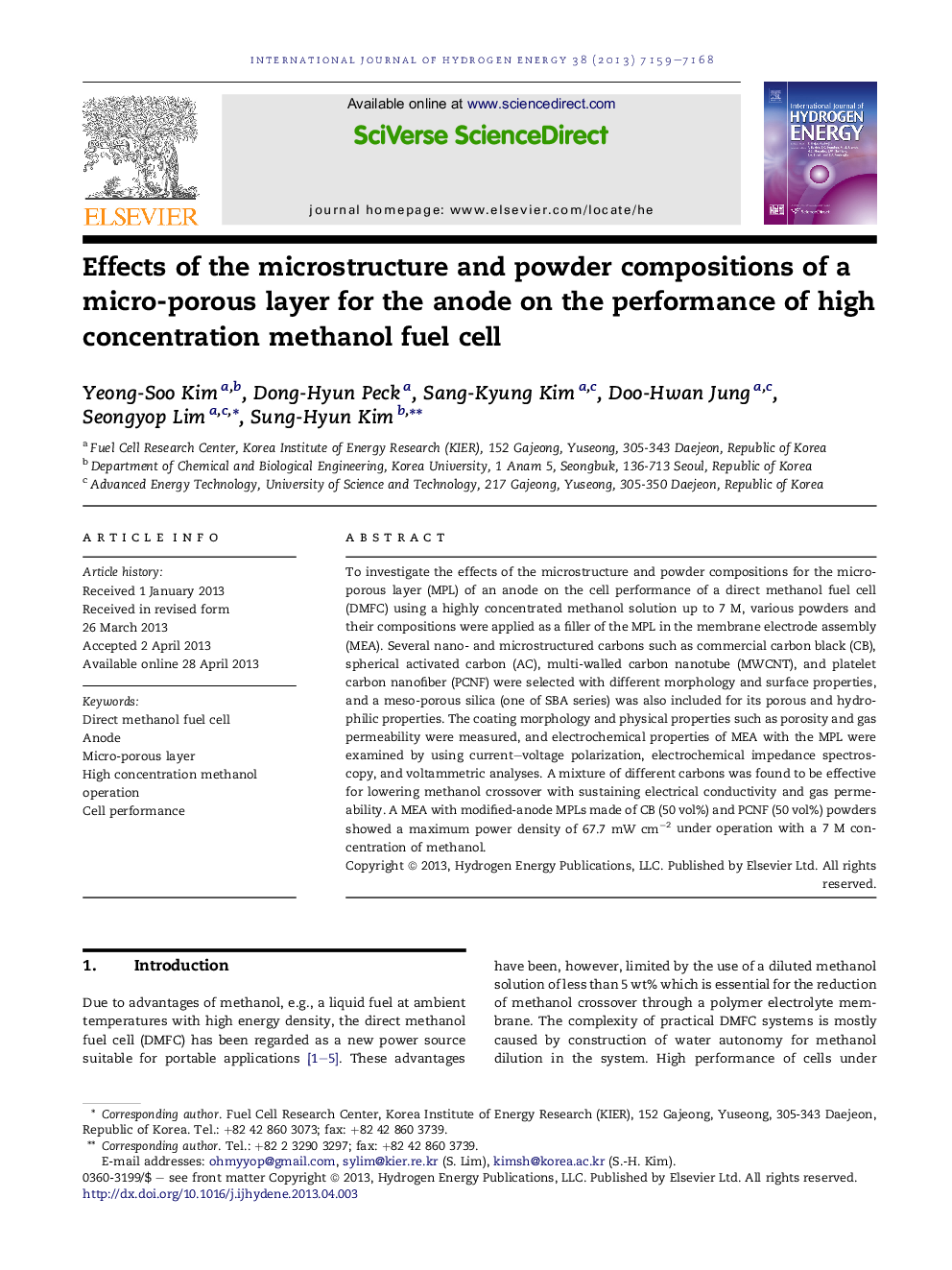| Article ID | Journal | Published Year | Pages | File Type |
|---|---|---|---|---|
| 1277499 | International Journal of Hydrogen Energy | 2013 | 10 Pages |
•The properties of a micro-porous layer (MPL) were controlled using various powders.•We electrochemically examined MEAs with anode MPLs.•Cracks in MPL were caused by the use of powders with low tapped density.•A MEA with modified MPL displayed the best performance of 67.7 mW/cm2.
To investigate the effects of the microstructure and powder compositions for the micro-porous layer (MPL) of an anode on the cell performance of a direct methanol fuel cell (DMFC) using a highly concentrated methanol solution up to 7 M, various powders and their compositions were applied as a filler of the MPL in the membrane electrode assembly (MEA). Several nano- and microstructured carbons such as commercial carbon black (CB), spherical activated carbon (AC), multi-walled carbon nanotube (MWCNT), and platelet carbon nanofiber (PCNF) were selected with different morphology and surface properties, and a meso-porous silica (one of SBA series) was also included for its porous and hydrophilic properties. The coating morphology and physical properties such as porosity and gas permeability were measured, and electrochemical properties of MEA with the MPL were examined by using current–voltage polarization, electrochemical impedance spectroscopy, and voltammetric analyses. A mixture of different carbons was found to be effective for lowering methanol crossover with sustaining electrical conductivity and gas permeability. A MEA with modified-anode MPLs made of CB (50 vol%) and PCNF (50 vol%) powders showed a maximum power density of 67.7 mW cm−2 under operation with a 7 M concentration of methanol.
